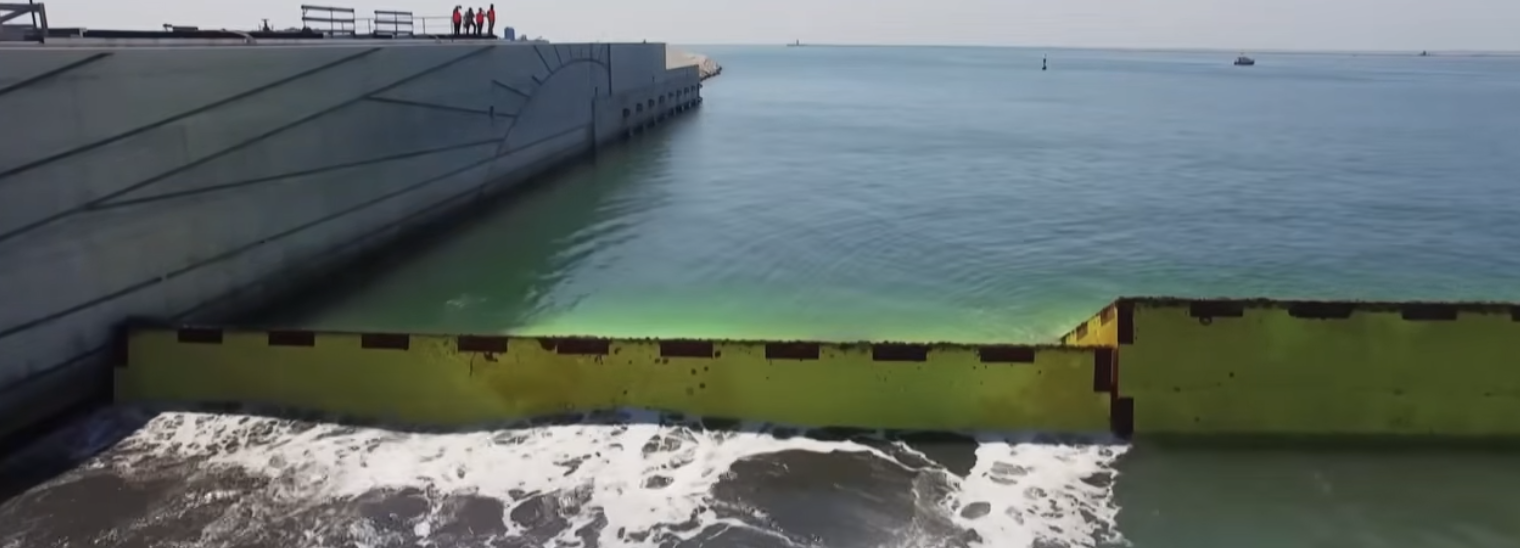Venice, Italy — the floating city of romance, canals, and architectural wonders — has always lived in harmony (and tension) with water. For centuries, Venetians have embraced the lagoon as both a protector and a threat. But in recent decades, one question has become increasingly urgent:
How does Venice manage flooding?
Let’s dive into the fascinating mix of ancient wisdom, engineering genius, and cutting-edge technology that keeps Venice above water — with a spotlight on the revolutionary MOSE Project, a modern marvel safeguarding one of the world’s most extraordinary cities.
💦 Why Does Venice Flood in the First Place?
Venice’s periodic flooding, known locally as acqua alta (“high water”), occurs when unusually high tides combine with weather conditions that push seawater into the lagoon. These events are often intensified by:
- 🌕 Astronomical tides — natural tidal peaks aligned with the moon’s gravitational pull
- 🌬️ Sirocco winds — strong southern winds that push seawater toward the Venetian Lagoon
- 🌧️ Heavy rainfall — which raises lagoon levels
- 🌡️ Climate change and sea-level rise
Venice is also slowly sinking — around 23 centimeters over the past century — due to both natural subsidence and past groundwater extraction. Combine that with global sea-level rise, and the result is a city increasingly at risk of flooding, particularly during autumn and winter.
🚧 What Is MOSE? Venice’s Giant Flood Barrier
The centerpiece of Venice’s modern flood defense is MOSE — short for Modulo Sperimentale Elettromeccanico (Experimental Electromechanical Module).
🌊 What Exactly Is MOSE?
MOSE is an ingenious system of 78 mobile floodgates installed at the three lagoon inlets — Lido, Malamocco, and Chioggia — where the Adriatic Sea meets the Venetian Lagoon. Under normal conditions, these massive barriers rest flat on the seabed, filled with water.
When a flood is forecast, compressed air is pumped in, forcing the gates to rise and temporarily seal off the lagoon from the sea. The result? Venice stays dry, even when tides surge well above normal levels.
📍 Key Facts About MOSE
- Construction began: 2003
- Operational testing: 2020
- Full activation: Expected in 2025
- Total cost: Over €6 billion
- Barrier height: About 20 meters each
- Protection level: Up to 3 meters above average sea level
Once fully operational, MOSE will safeguard not only St. Mark’s Square but the entire lagoon ecosystem — providing a buffer against storms and tides that once paralyzed the city several times a year.
📅 How Often Is MOSE Used?
MOSE isn’t raised daily — it’s activated only when tides are forecast to exceed 110 cm, which is when low-lying areas like St. Mark’s Square typically start to flood.
In 2023 alone, MOSE was raised over 30 times, successfully preventing major floods. One of its biggest triumphs came in November 2021, when tides reached 135 cm — yet the city remained dry, a milestone that made global headlines.
To see MOSE in action, you can sometimes observe test operations from vantage points near Lido Island or Chioggia, where the lagoon barriers rise dramatically from the sea.
🏗️ Other Anti-Flood Measures in Venice
MOSE may be the star, but it’s not alone. Venice employs a full network of defenses — both high-tech and time-honored — to manage and mitigate flooding.
1️⃣ Raised Walkways (Passerelle)
When acqua alta strikes, the city installs temporary raised walkways across key routes, allowing residents and tourists to move around even during moderate flooding.
2️⃣ Water Pumps and Drainage Systems
Venice maintains a complex network of pumps and drainage tunnels that help control water levels and prevent backflow into homes and businesses.
3️⃣ Building Reinforcements
Many Venetian buildings are now equipped with aqua-stop barriers, watertight doors, and raised electrical systems to minimize flood damage.
4️⃣ Tide Forecasting & Alert Systems
The city’s Tide Forecast Center provides real-time alerts through text messages, sirens, and mobile apps, keeping Venetians and visitors informed when water levels are rising.
⚖️ Is MOSE the Final Solution?
MOSE is a powerful defense — but not a permanent fix. Experts warn of several long-term challenges:
- 🌍 Rising Sea Levels: Global climate change could outpace MOSE’s capabilities if ocean levels continue to climb through the 21st century.
- 🐟 Environmental Impact: Some scientists worry the barriers may alter lagoon ecosystems or affect fish migration and sediment flow.
- 💶 High Maintenance Costs: The gates must be cleaned, maintained, and serviced regularly — a process costing millions each year.
Still, as of today, MOSE represents Venice’s best and most effective protection against increasingly frequent high tides. Without it, the floods of 2019 — which caused devastating damage — could easily repeat.
👢 What Should Visitors Do During High Water?
If you happen to visit during acqua alta, don’t panic — it’s usually short-lived and often part of the Venetian experience. In fact, locals handle it with remarkable grace (and tall boots).
🧭 Practical Tips:
- Check forecasts at the official tide website: Centro Previsioni e Segnalazioni Maree
- Buy waterproof boots or disposable covers from local shops
- Stick to higher areas like Dorsoduro or Cannaregio during peak tides
- Experience the beauty of a partially flooded St. Mark’s Square — it’s one of Venice’s most iconic sights
And thanks to MOSE, chances are you’ll see far less flooding than visitors did just a few years ago.
🌍 The Future of Venice
Venice stands at a crossroads between heritage and innovation. With the MOSE system, the city has taken a bold, decisive step toward adapting to climate change — but its future also depends on global action, sustainable tourism, and ongoing preservation efforts.
At Tour Leader Venice, we’re passionate about showing travelers the real Venice — a city not just surviving, but thriving, thanks to the resilience and creativity of its people.
From lagoon tours to off-the-beaten-path walks, our local guides share stories of how Venice continues to balance history, innovation, and hope — one tide at a time.
💭 Final Thoughts
So, how does Venice manage flooding? Through a remarkable fusion of old-world resilience and modern engineering — with MOSE as its crown jewel.
While it’s not a perfect solution, MOSE gives Venice something priceless: time — to adapt, to innovate, and to keep its legacy alive above the rising waters.
For now, visitors can stroll the canals and squares of Venice with greater peace of mind, knowing that behind the beauty lies one of the world’s most advanced flood defense systems — quietly standing guard beneath the waves.
🌊 Explore the Venice Lagoon with Local Experts
Because Venice isn’t just floating — it’s fighting, innovating, and inspiring the world. 💙
FAQs for How Does Venice Manage Flooding? (MOSE Project Explained)
What exactly is the MOSE Project, and how does it protect Venice?
The MOSE Project (Modulo Sperimentale Elettromeccanico) is a system of 78 mobile floodgates installed at the lagoon’s three inlets — Lido, Malamocco, and Chioggia. When a high tide is forecast, compressed air lifts the gates to block seawater from entering the lagoon, keeping Venice dry even during extreme acqua alta events. To experience the lagoon up close and see MOSE’s surrounding areas, you can join our Venice Tour of the Lagoon — Discover the Hidden Gems with local experts.
Is Venice still flooding despite MOSE?
Since MOSE’s partial activation in 2020, major floods like those of 2019 have been largely prevented. Occasional high tides may still flood small areas, but widespread damage has been avoided. When tides exceed 110 cm, MOSE is raised to protect the entire city — including St. Mark’s Square. Visitors today can enjoy Venice with much less disruption and greater safety.
Can visitors see MOSE or learn more about Venice’s flood defenses?
Yes — you can observe MOSE test operations near Lido or Chioggia, or discover how Venice’s relationship with water has evolved over centuries through guided tours. Our Venice Sunset Tour on a Traditional Bragozzo Boat and Slow Lagoon Experiences reveal how Venetians live in harmony with the lagoon — the same waters MOSE now protects.







